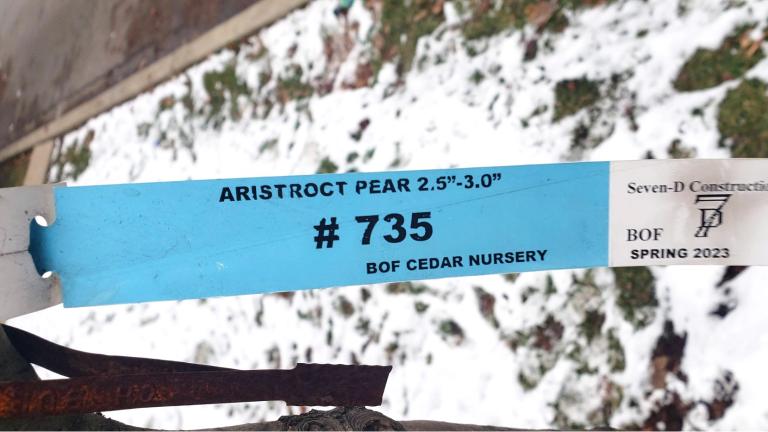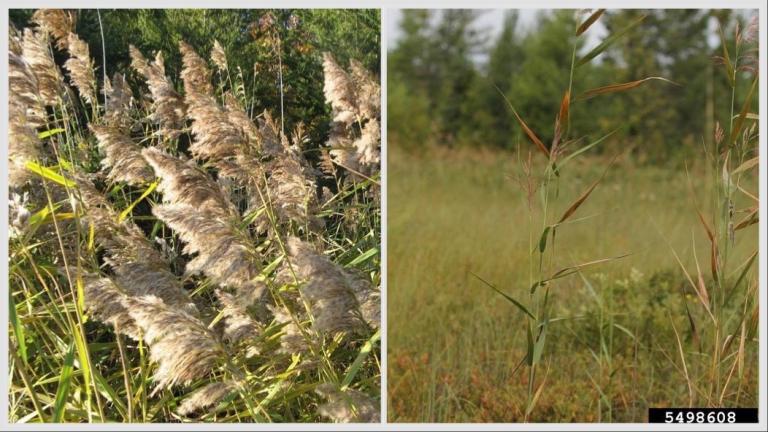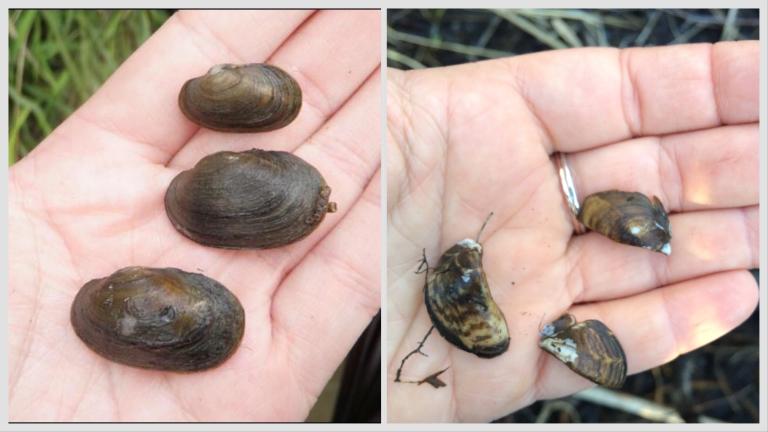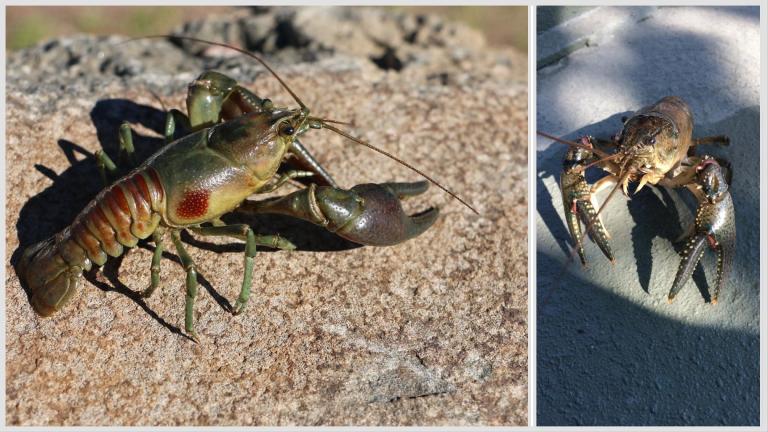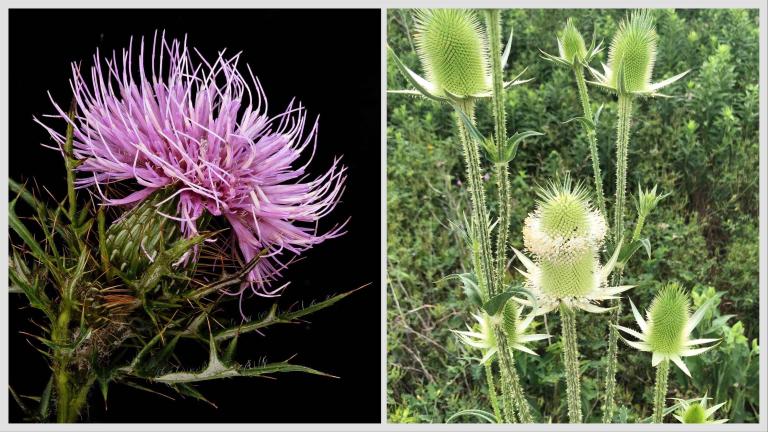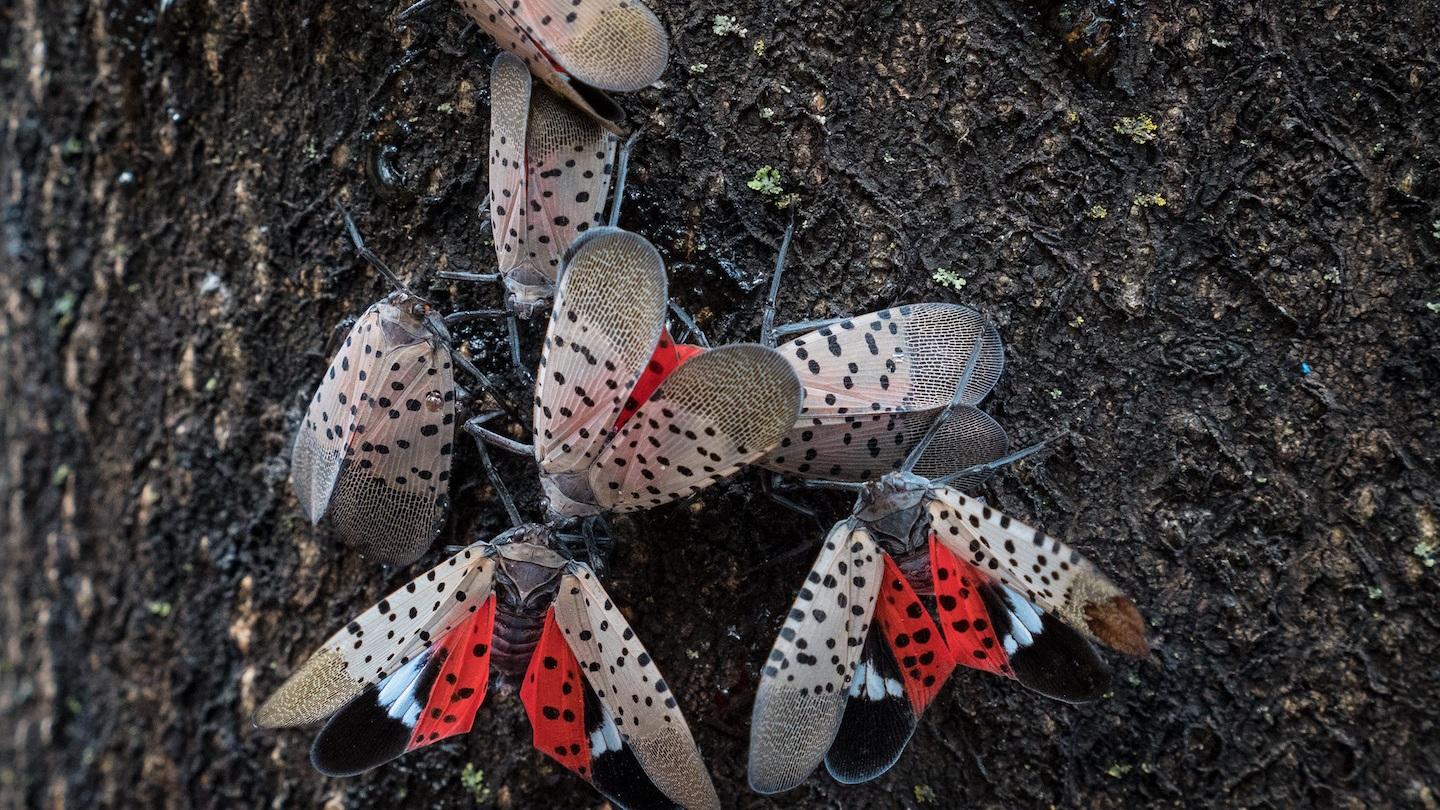 Adult spotted lanternfly. (U.S. Department of Agriculture)
Adult spotted lanternfly. (U.S. Department of Agriculture)
January’s brutal cold weather may have Chicagoans questioning, “Why do I live where the air hurts my face?” But you know who isn’t phased by the sub-freezing temperatures?
Spotted lanternfly.
The presence of the invasive insect, capable of devastating trees and agriculture, was confirmed in Illinois back in September, and the race is now on to limit the infestation to the greatest extent possible.
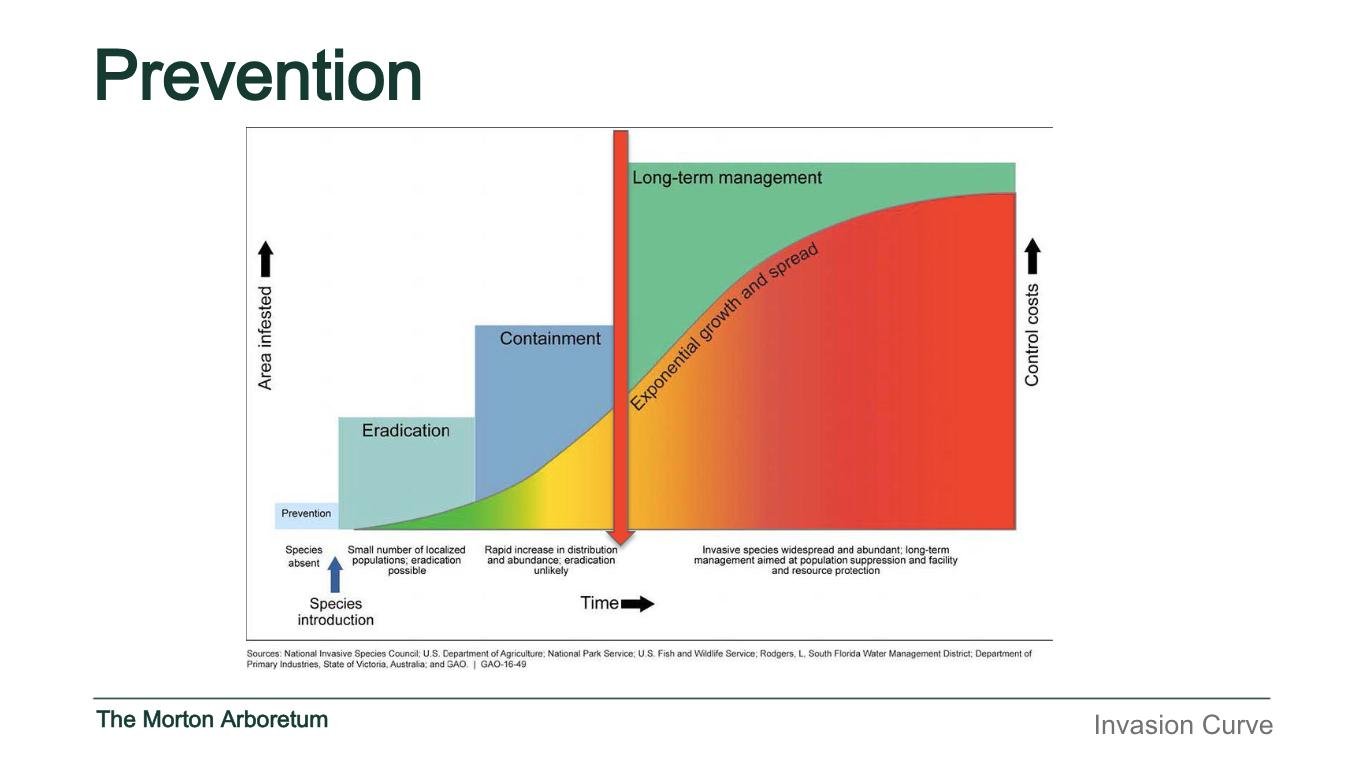 Chicago is on the left side of the chart and the hope is that it can keep from moving into the red zone. (Morton Arboretum)
Chicago is on the left side of the chart and the hope is that it can keep from moving into the red zone. (Morton Arboretum)
During a recent educational webinar, hosted by University of Illinois Extension to spread awareness of the pest and the efforts to contain it, attendees questioned whether an arctic blast wouldn’t take care of the problem naturally.
Presenter Tricia Bethke, forest pest outreach coordinator at Morton Arboretum, quickly dashed those hopes.
It would take an unprecedented deep freeze, along the lines of three solid weeks of minus-30 temperatures, to kill the lanternfly’s eggs, Bethke said.
So the conversation returned to methods of hand-to-hand combat, which is still feasible while the infestation remains small.
In the 10 years since spotted lanternfly (Lycorma delicatula) was first identified in Pennsylvania, natural resource experts in both the public and private sectors have gained considerable knowledge about the pest, and states in the path of its likely spread had time to prepare, Bethke said.
“We were really ready,” Bethke said of Illinois’ rapid response.
A survey of the entire state was conducted back in 2015, traps were set, and high-risk pathways were discussed, she said. Roadways, airports, railroad tracks and wineries — “Spotted lanternfly loves to feed on grapevines,” Bethke said — were all points of concern, particularly transportation hubs like Cook County.
Those predictions proved correct, she said.
The lanternfly came in on rail, specifically Norfolk Southern, and a small population was located in the Fuller Park neighborhood of Chicago, home to a sizable railyard. (Two other positive IDs in Chicago were dead adults, Bethke said, and could have hitched a ride on a plant.)
To keep what is currently a small outbreak from mushrooming out of control, the plan is to attack it at various points throughout the bug’s lifecycle.
This winter, officials will be retracing the lanternfly’s route, searching for the pest’s egg masses (laid in late fall) to the east along the rail line and aiming to detect any additional populations. Destroying eggs before they hatch in the spring will help nip the next generation before it gets a chance to emerge.
The public can keep an eye out for eggs, as well, which are yellowish-brown in color and covered with a gray, waxy coating prior to hatching. The trick is, spotted lanternfly lay their eggs pretty much anywhere as long as the surface is smooth.
Scrape them with a credit card or some other utensil, put the eggs in a sealed plastic bag and toss them in the trash, officials have advised.
 Spotted lanternflies lay their eggs on almost any smooth surface. The egg masses have a telltale waxy coating. (U.S. Department of Agriculture)
Spotted lanternflies lay their eggs on almost any smooth surface. The egg masses have a telltale waxy coating. (U.S. Department of Agriculture)
Come May, when the first stage of juveniles hatches, people should remain extra vigilant when it comes to anything that looks like a tick. The first “instar” — or stage of lanternfly development — is just an eighth of an inch in size, or about as big as a tick, Bethke said.
“So make sure a tick is a tick,” she advised.
If it’s a lanternfly, take a picture, note the location, smush it dead and then report it to authorities at [email protected]; be sure to include photos.
The same instructions apply to any spotted lanternflies found in their later stages of development (they change from black to red), all the way through adulthood, at which point they will be quite large and sporting their distinctive polka-dotted wings.
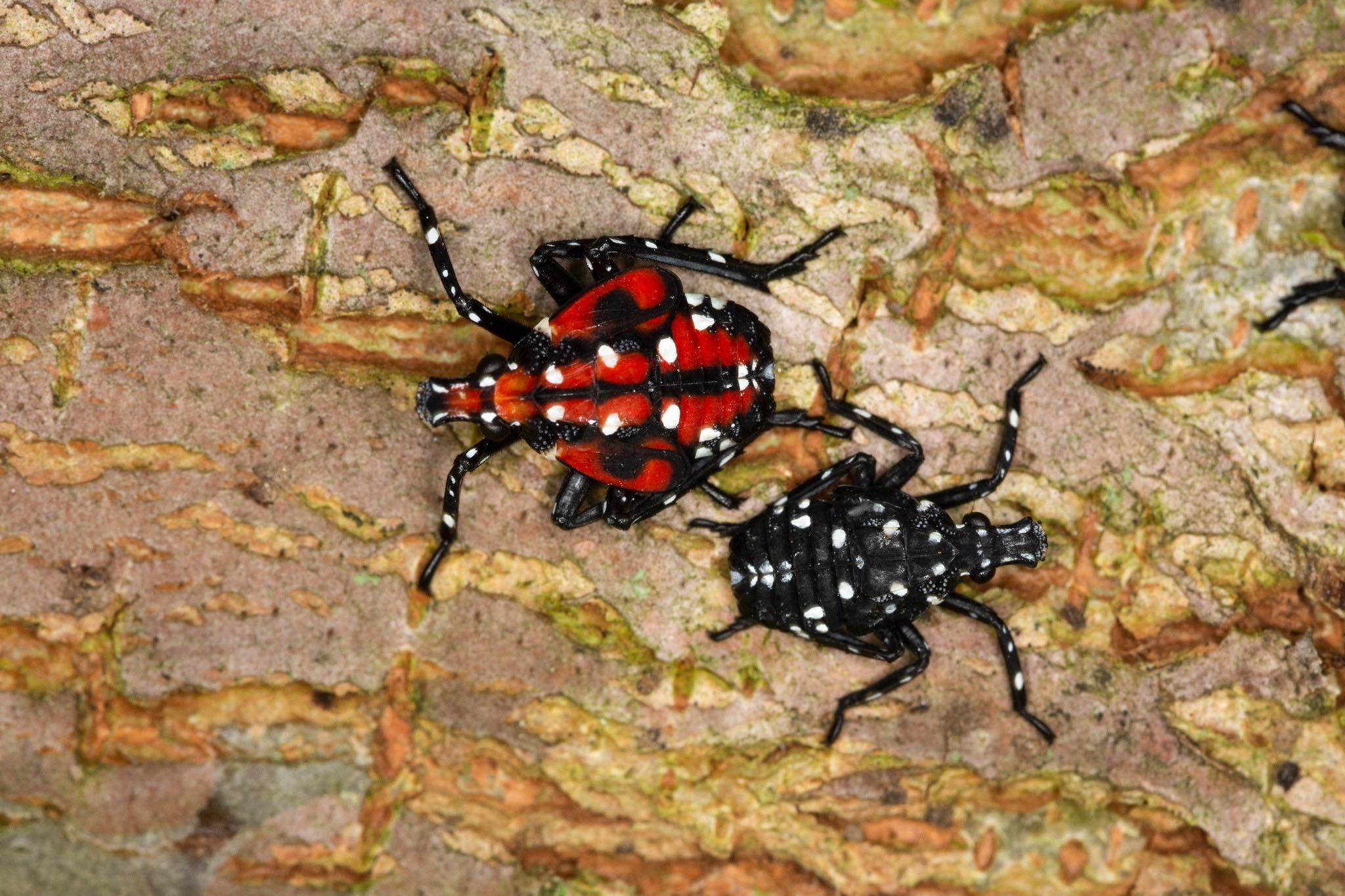 Spotted lanternfly nymphs are red in their final stage and black in their earlier stages. (U.S. Department of Agriculture)
Spotted lanternfly nymphs are red in their final stage and black in their earlier stages. (U.S. Department of Agriculture)
One notable behavior trait of spotted lanternflies is that they like to aggregate, or move in groups, according to Bethke.
“The older they get, the bigger they get, the more they gather,” she said.
Adults will find a healthy host tree and just hang out. “They don’t want to move, they’re very heavy,” she said.
The damage they cause comes from their piercing mouth part — Bethke described it as “like a push pin” — which they use to stab a tree in order to suck its sap.
While draining sap is one of the ways the lanternfly stresses a tree, the other is the production of honeydew (basically lanternfly “poop”), which can build up on plants and lead to the growth of a fungus known as sooty mold.
Bethke encouraged people to monitor their trees for signs of duress — maybe it looks like it needs water, despite receiving plenty of rain — that could be an indication of an infestation. Black walnut, willow, lilac, poplar, birch, red and silver maple, and apple are among the lanternfly’s favorites to feed on, along with the invasive tree of heaven. (Willows and poplars could create an additional high-risk pathway along rivers, Bethke noted.)
With early detection and rapid response, Bethke said Illinois could avoid the wholescale infestations that have plagued Pennsylvania, New Jersey and Delaware.
“It sounds like a lot of gloom and doom, but I am filled with so much hope,” she said.
Contact Patty Wetli: @pattywetli | (773) 509-5623 | [email protected]

